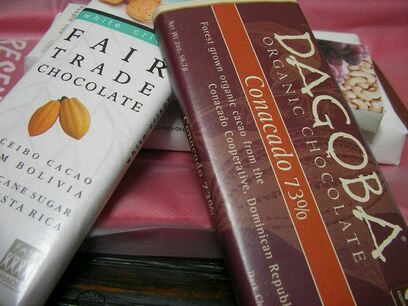|
What's the longest you've gone without seeing the sun? For me, it was probably the time I went to a modern dance convention in a Las Vegas casino. Even away from the gambling floor, the ballrooms and buffets were disorienting in artificial light and stale air. But after 8 or 10 hours, I always escaped to the parched desert air, relieved to see the sky. Jimmy's story reminds me to never take the open air for granted. When Jimmy Lopez was twelve years old he didn't see the sun for two years, locked in a warehouse in Los Angeles. Forced by fist-and-gun wielding overseers to build furniture seven days a week, he received no pay, and if he showed any resistance, he was beaten. It sounds medieval, but it this happened in the early 2000s. I met Jimmy at the S.H.A.D.E symposium in Oakland, a survivor-led led conference focused this year on male exploitation. I can't stop thinking about his story. And so with Jimmy's permission, I share his story with you. Growing up in Honduras, gangs had tried to recruit Jimmy when he was eight. After he declined, Jimmy's whole family moved to a remote rural village, knowing that their lives were in danger. But word came that the gang hadn’t forgotten him. “They were looking to kill me,” Jimmy said. At age ten, on his own, Jimmy left home. He had no idea where he was going, but he knew he couldn't stay. Jimmy followed other children on the road and made his way, somehow, through Honduras and Mexico, all the way to the US border in Mexicali. He managed to survive by working for a family for food and a place to sleep but missed his family. “I cried every night,” A man offered to help him find a better job, and Jimmy, now twelve, jumped at the chance to make some money, and maybe even help his family. The man brought Jimmy to Los Angeles, to the furniture factory where Jimmy became a slave. Other workers would come in during the day, but Jimmy wasn't allow to speak to them. I asked if the others knew his situation. “They knew,” he said. “But they didn't say anything, because they didn't have papers.” Jimmy worked longer hours than anyone, but didn't receive a cent. “I didn't know my rights, I didn't know the culture,” he said. He didn't know that he was being trafficked, that this happened to other kids too. He continued to cry every night. One day, after a beating, Jimmy made a run for it. He got out of the warehouse and sprinted to the nearest friendly face, a man at a small food stand. The owner said he would help him. Jimmy started working at the food stand, but the man said he had a way Jimmy could make some extra money. “I just had to drive a truck to a place, and then drive a different truck back.” What could go wrong? Turns out, plenty. Jimmy was pulled over on his first trip by the police. He had no papers no license no documentation. He was 15 years old. They found 2 kilos of cocaine in the truck. Jimmy was locked up again for two years, this time in detention. He was treated as a criminal, and not recognized as the victim of child human trafficking that he was. “I ask myself, why was I brought into this world? To suffer?“ Jimmy tried to kill himself repeatedly. Jimmy finally caught a break when his court appointed lawyer recognized that Jimmy was not a hardened criminal, but a boy in need of help. The lawyer connected Jimmy to the Coalition to Abolish Slavery & Trafficking (CAST), an organization that assisted human trafficking survivors. CAST helped represent Jimmy in court, explaining to the judge what human trafficking is and how Jimmy had gotten trapped in it. Thankfully, they prevailed. Jimmy was free, but he had no home, no family, no income, no friends, and no English. There were no shelters for male trafficking survivors (even now, there are barely bed for females). Again CAST stepped in, placing Jimmy with a homeless youth program run by the Salvation Army. “I didn’t trust anyone,” Jimmy remembers. He was able to go to school and learn English, but the crying continued. Two things helped: therapy, which Jimmy was able to continue for three years after his release from prison; and peer counseling. It was another teen in this group who told him, “You can change." With her inspiration, he found the strength to keep going. CAST helped Jimmy get his T visa, specifically meant for people trafficked to this country. And thirteen years after walked away from his home in rural Honduras, Jimmy’s family came to join him in California —including a younger brother he never met. Jimmy now works at the Iberian Airlines counter in LAX. He hikes and skiis, and reads books about self-improvement. And he reads personal accounts by other survivors, which, he says, “helps me emotionally and mentally progress.” He also shares his own story as a survivor-advocate, and hopes to write his memoir one day. “What I don’t understand,” he told me,” is how people can be so bad to each other? Why can’t people help each other?“ Indeed. Jimmy’s story seems especially relevant now, with refugees fleeing gang violence from Honduras and Guatemala, searching for safety at our borders, only to be turned away with tear gas, hostility, and politically-driven lies about who they are. It also begs the question that we all should be asking about the products we buy…Who made this? Where did it come from? I was horrified to hear that furniture made in Los Angeles was the product of an exploited and abused child. I buy fair trade chocolate but it never occurred to me to seek out fair trade furniture. Many assume that products made in America couldn’t possibly include slave labor. But now we know this is incredibly naïve. I am not currently in the market for furniture, but I don’t recall ever seeing a dining room table, a couch or refrigerator that was labeled as free from slave labor. I don’t know how we as consumers can ensure that the products we have in our home are made ethically, other than only buying from local artisans whose workshops and factories we can visit ourselves. But I do know that this will never change until consumers start demanding it. One of my goals for 2019 is to upgrade my wardrobe a bit. I’m taking a pledge to only buy clothes and shoes that are fair trade or ethically made. That label is not common, and the clothes aren’t cheap. My husband asked me if this means I’m going to be making all of my own clothes. Hopefully it doesn’t come to that... but if my outfits seem kind of janky, maybe that’s why. Meanwhile, let’s all remember Jimmy, and start asking about who made the clothes, furniture, gadgets, toys and food that we bring into our homes.
6 Comments
Jim McSilver
1/21/2019 12:18:51 pm
Thanks for sharing Jimmy's story, Jennifer. An important story and message, and your telling of it was very compelling.
Reply
Jennifer
1/31/2019 09:19:07 am
Thanks Jim. Even though I've read about all kinds of trafficking, it strikes me in a really different way when I meet someone who lived through it. I hope that feeling translates through film...
Reply
Elizabeth Perlman
2/1/2019 12:05:54 pm
This is such a harrowing and important story... and you're right that I didn't know about any of this. I am reminded of the (actually very funny!) show "The Good Place" in the way they're exploring morality and how difficult it is to make good choices nowadays, just because of stuff like this, because there are so many invisible evils we become implicit in—depending on where we spend our money. (God, everything in our world needs to change!!!) Thank you for shedding light on this. I'll be spreading the word to everyone I know!
Reply
Jennifer
2/22/2019 02:27:03 pm
Thanks for reading! --I love The Good Place for precisely this reason (and because it's genuinely funny). I'm still researching how to be a more conscious shopper, so much to learn!
Reply
Melanie Choy
2/21/2019 11:55:22 pm
Insightful article and I need to re-evaluate where manufactured products came from and by who. BTW, your clothes are not janky at all!
Reply
5/10/2023 04:58:50 am
Jimmy's story is a stark reminder of the reality of child slavery in modern times, and the importance of being aware of the origin of the products we buy. It's crucial to consider the ethics of the supply chain, and to ensure that the companies we support are not exploiting vulnerable people. We must do our part to help end this cycle of exploitation and protect the human rights of all people, especially children.
Reply
Leave a Reply. |
Categories
All
|







 RSS Feed
RSS Feed